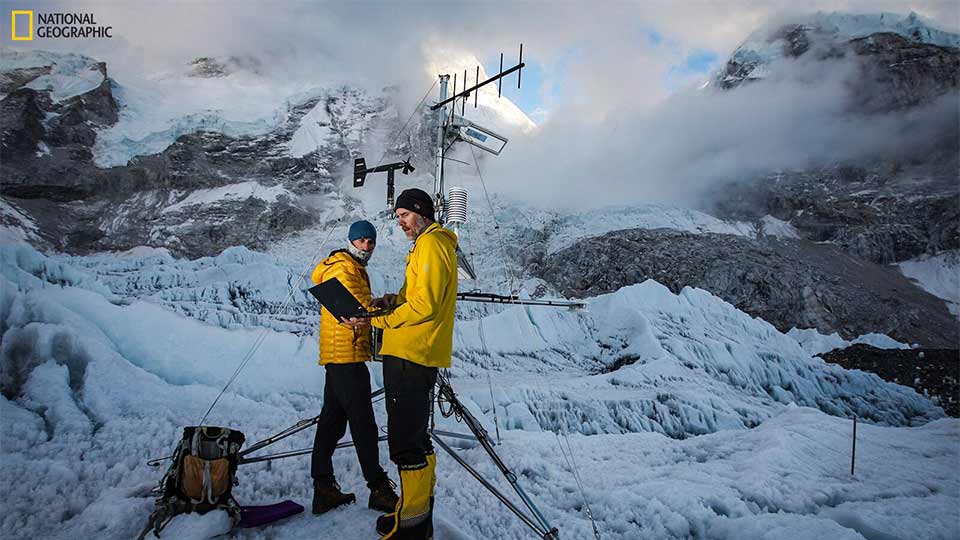26 Jun 2019
Everest: I journeyed into the 'death zone' to install the world’s highest weather station
Perched at almost 8,500m on Everest, we paced back-and-forth, attempting to stave off frostbite as temperatures hovered close to -30°C and our drill batteries became too cold to work. Our ambition to install the highest automatic weather station in history looked destined for failure.
We were at the end of an almost two-month expedition to conduct a hugely ambitious scientific survey of the 8,848-metre Mount Everest. I am a climate scientist who specialises in extreme environments, and together with Baker Perry (a geographer at Appalachian State University), I was trying to install the highest weather station in the world.
Weeks of sickness had plagued the expedition (from diarrhoea to full-on Influenza-A), but we had so far succeeded. Four stations were under our belt, including at Everest Basecamp (5,315 metres), and Camp II (6,464 metres) – perched high above the infamous Khumbu Icefall.
The day before we had celebrated installing the highest operating weather station in the world, near Camp IV at almost 8,000 metres. Only one team of Italian scientists had deployed equipment this high before.
Any celebrations, however, were short-lived...
Dr Tom Matthews, of the School of Social Sciences, talks sickness, frostbite, crowds and more in The Conversation.
He was part of the team that installed the two highest weather stations in the world on Mount Everest to enable communities to respond to climate risks. The expedition was led by National Geographic in partnership with Tribhuvan University and Rolex.
Read the full Conversation article here.

Top image caption: Dr. Tom Matthews and Dr. Baker Perry, members of the National Geographic and Rolex Perpetual Planet Extreme Expedition to Mt. Everest, work on the automated weather station at Everest Base Camp. Photo by Freddie Wilkinson, National Geographic.















